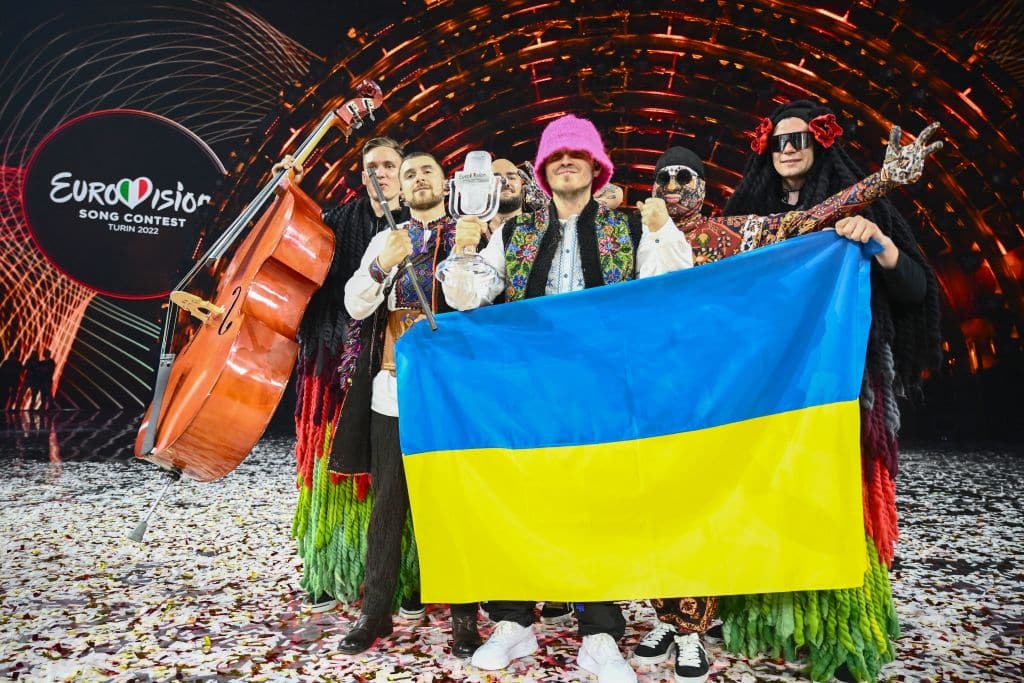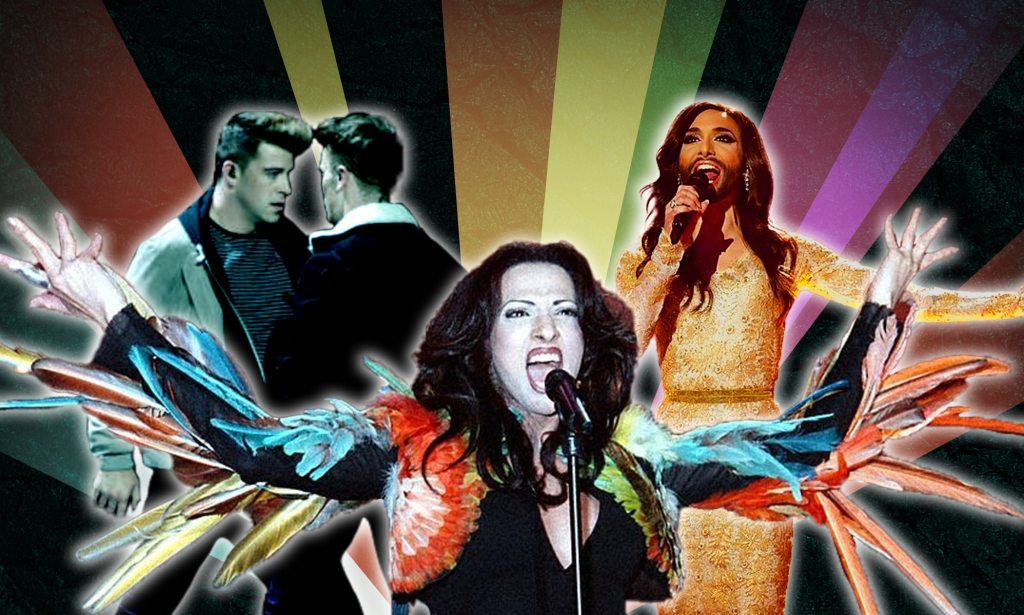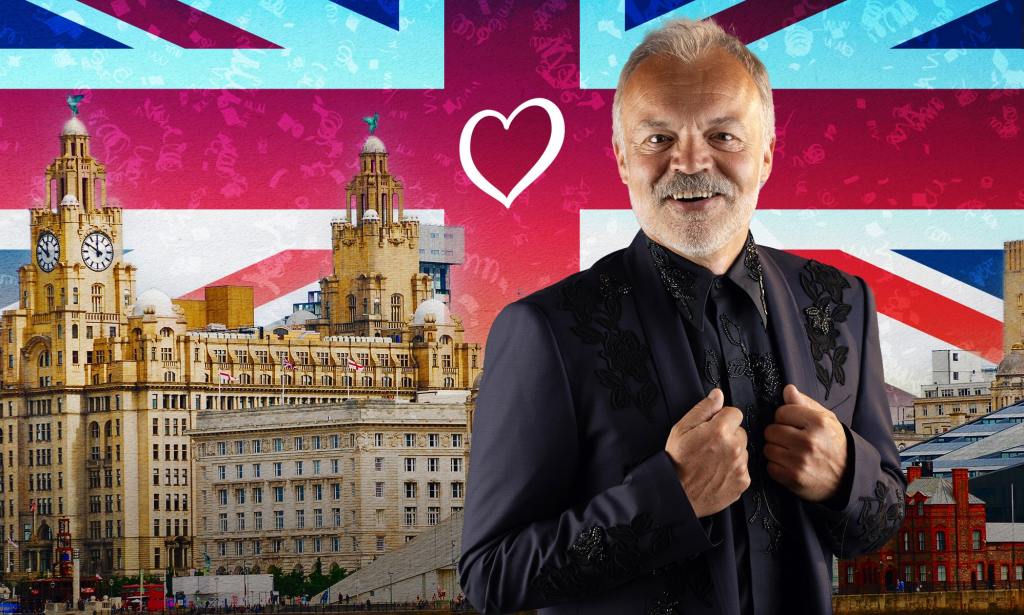Eurovision Song Contest 2023: What is the Handover and Allocation Draw and how can you watch it?

AJ Odudu (left) and Rylan Clark hosted the Eurovision Song Contest 2023: Handover and Allocation Draw in January. (BBC)
The Eurovision Song Contest is heading back to the UK in 2023 and Tuesday (31 January) sees things kick off in style with the official Handover and Allocation Draw.
Presenters Rylan Clarke and AJ Odudu are set to host the show, which will see this year’s competing countries find out which of the two Semi-Finals they’ll be allocated to in May.
The programme will also see Eurovision officially ‘handed over’ from last year’s host city, Turin, to 2023’s host city, Liverpool.
Eurovision 2023 is taking place in the UK due to the ongoing Russian invasion of Ukraine, which won last year’s competition with its entry “Stefania”, performed by rap group Kalush Orchestra.

After the UK finished runner-up in 2022 with “Space Man”, performed by Sam Ryder, it was decided that Eurovision would be hosted by the country on behalf of Ukraine. It is the first time the UK has hosted Eurovision since 1998, when it took place in Birmingham.
Where can you watch the Eurovision Song Contest 2023: Handover and Allocation Draw?
Eurovision Song Contest 2023: Handover and Allocation Draw will air live on BBC Two and on iPlayer in the UK from 7pm GMT on Tuesday (31 January).
Eurovision fans around the world will also be able to tune into the programme via the official Eurovision YouTube channel from 8pm CEST.
The 30-minute programme will be hosted by AJ and Rylan and will see the official slogan and look of this year’s competition unveiled, as well as the Semi-Final line-ups.

According to the BBC, the show will feature young people from a Liverpool school as well as Ukrainians who have settled in Liverpool since the Russian invasion in February 2022.
Presenter Scott Mills will also be on hand to take a look back over memorable moments and hits from the competition, which was first held in 1956.
What happens in the Eurovision Handover and Allocation Draw?
The Eurovision Handover and Draw Allocation will see the Mayor of Turin, Stefano Lo Russo formally hand over the ‘Insignia’ of the Eurovision Song Contest to the Mayor of Liverpool, Joanne Anderson.
The allocation will then take place, dividing this year’s entered nations into two groups that will compete in Semi-Final One on Tuesday 9 May and Semi-Final Two on Thursday 11 May respectively.
The 10 countries who receive the most votes in each Semi-Final will move on to the Grand Final on Saturday 13 May. Only viewers in the countries taking part in the semi-final will be able to vote, and they cannot vote for their own country.

The so-called ‘Big Five’ nations of the UK, Italy, France, Spain and Germany get an automatic pass to the Grand Final, because they pay a higher proportion of the competition’s costs. As the winner of last year’s contest, Ukraine will also automatically make the Grand Final too.
Viewers from ‘Big 5’ countries and Ukraine will be able to vote in one of the Semi-Finals. Which Semi-Final one each country will be eligible to vote in will be randomly determined ahead of the shows.
Countries are randomly selected for each Semi-Final from five different shortlists, or ‘pots’. These pots are determined by past voting patterns to prevent neighbouring or friendly countries that traditionally vote for each from being entered into the same Semi-Final.
The pots that this year’s semi-final entrants will be selected from are as follows:
Pot 1
Albania
Austria
Switzerland
Croatia
Serbia
Slovenia
Pot 2
Denmark
Australia
Finland
Iceland
Norway
Sweden
Estonia
Pot 3
Armenia
Azerbaijan
Georgia
Israel
Latvia
Lithuania
Pot 4
Cyprus
Greece
Ireland
Malta
Portugal
San Marino
Pot 5
Belgium
Czech Republic
Netherlands
Moldova
Poland
Romania
The Eurovision Song Contest 2023: Handover and Allocation Draw airs at 7pm GMT on Tuesday 31 January on BBC Two and iPlayer in the UK, and will be available to watch on Eurovision’s YouTube channel globally.
How did this story make you feel?

